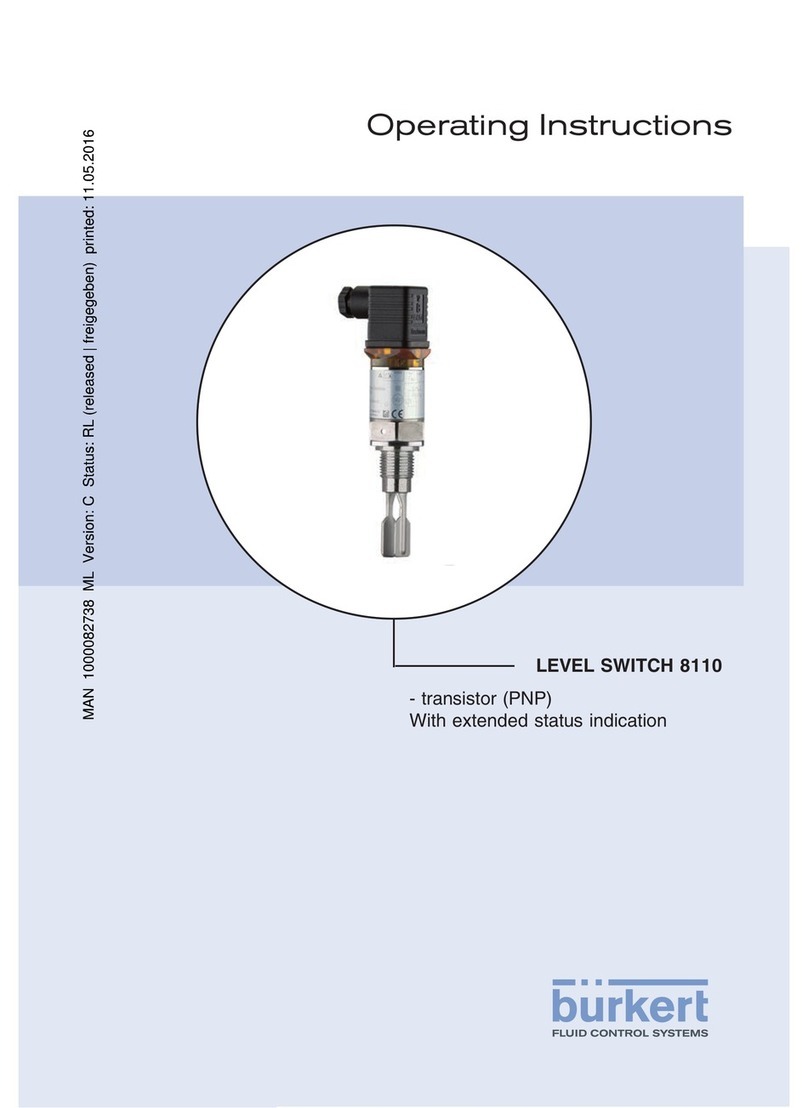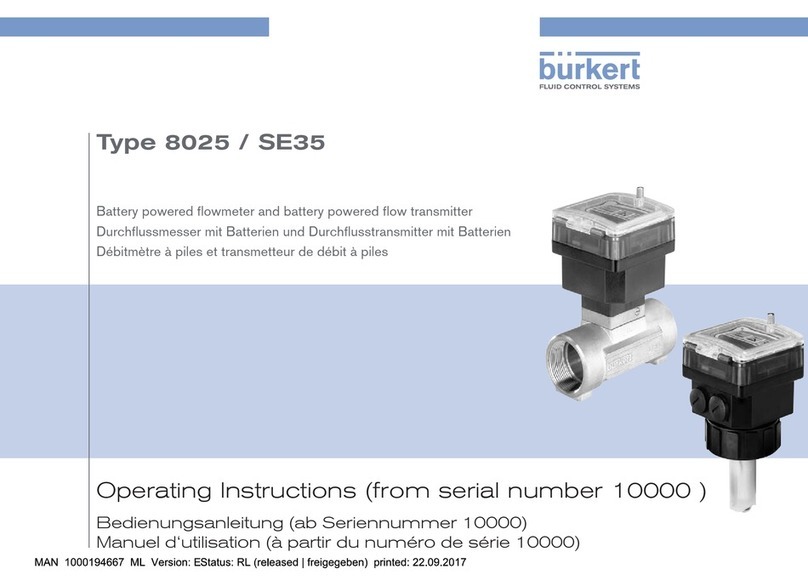
4
CAUTION
Warns against a possible risk.
▶Failure to observe this warning can result in substantial
or minor injuries.
NOTE
Warns against material damage.
▶Failure to observe this warning may result in damage
to the device or system.
Indicates additional information, advice or
important recommendations.
refers to information contained in this manual or in
other documents.
▶Indicates an instruction to be carried out to avoid a dan-
ger, a warning or a possible risk.
→Indicates a procedure to be carried out.
Definition of the word "device"
The word "device" used within this manual always refers to
the flowmeter type 8020.
5
2. INTENDED USE
Use of the device that does not comply with the
instructions could present risks to people, nearby
installations and the environment.
The flowmeter type 8020 is exclusively intended to
measure the flow rate of neutral or slightly aggressive
liquids free of solid particles.
▶This device must be protected against electromagnetic
interference, ultraviolet rays and, when installed outdoors,
the effects of climatic conditions.
▶This device must be used in compliance with the charac-
teristics and commissioning and use conditions specified
in the contractual documents and in the user manual.
▶Requirements for the safe and proper operation of the
device are proper transport, storage and installation, as
well as careful operation and maintenance.
▶Only use the device as intended.
6
3. BASIC SAFETY INFORMATION
This safety information does not take into account:
• any contingencies or occurences that may arise during
installation, use and maintenance of the devices.
• the local safety regulations for which the operating company
is responsible including the staff in charge of installation
and maintenance.
Danger due to high pressure in the installation.
Danger due to electrical voltage.
Danger due to high temperatures of the fluid.
Danger due to the nature of the fluid.
Various dangerous situations
▶Prevent any unintentional power supply switch-on.
▶Ensure that installation and maintenance work are car-
ried out by qualified, authorised personnel in posses-
sion of the appropriate tools.
7
Various dangerous situations
▶Guarantee a set or controlled restarting of the process,
after a power supply interruption.
▶Use the device only if in perfect working order and in
compliance with the instructions provided in the operat-
ing instructions.
▶Observe the general technical rules when installing and
using the device.
▶Do not use this device in explosive atmospheres.
▶Do not use fluid that is incompatible with the materials
the device is made of.
▶Do not use this device in an environment incompatible
with the materials it is made of.
▶Do not subject the device to mechanical loads.
▶Do not make any modifications to the device.




































